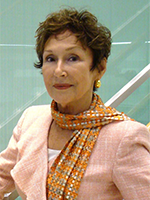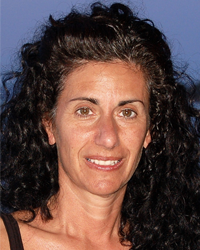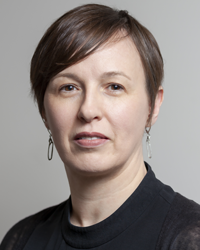The expanding older adult population is changing the face of the nation. With a striking growth rate of 1,000% from 2010 to 2020 for the ages 65 and older population, the United States already looks different. Considering continued upward trends, adapting to these changes will require industry innovation and cross-cutting solutions.
Speaking at the 2023 Milken Institute Future of Health Summit on the need to break silos and overcome outmoded ageist stereotypes of the wants and needs of older adults, Bob Kramer, founder of the National Investment Center for Seniors Housing and Care (NIC), crystallized the call to action: “If you don’t change this, your generation—you—are going to be consigned to social, economic, and cultural irrelevance for the latter third of your life.”
At the top of the list for change is the affordability and range of offerings for senior housing and care. With current models, too few older adults will be able to afford the housing and care they need, and this problem is most acute for the “Forgotten Middle”—middle-income older adults whose assets are above the threshold to qualify for government subsidies, but who lack the financial capacity to afford private pay options.
At the same time, older adults are increasingly seeking to age in community (nearly 80%), enabling them to continue connecting and contributing even as their care needs fluctuate over time. This goal remains out of reach for many due to the costs of in-home supportive services (which are not covered under traditional Medicare), the shortage of paid care workers, the dearth of accessible housing, and barriers to ongoing social engagement. Looking at the positive side of these challenges, there is tremendous opportunity and demand for innovative products and offerings in senior housing and care.
Innovation is being driven by integration and partnerships—part of a larger trend bringing together healthcare, supportive services and housing in varying arrangements to support the health and financial well-being of older adults. For example, health insurers are supporting housing needs with rental subsidies and by investing in affordable housing for communities. Senior housing operators are pioneering home-health initiatives using telehealth and data strategies. Additionally, senior housing and care operators are making strides in the value-based care space through partnerships with healthcare payers and providers tailoring benefits to their resident populations.
The list of bright spots across each domain is long, but senior housing and care is uniquely positioned at the epicenter, potentially bringing together all three. Figure 1 provides a simple visualization. Funding and financing models, value-based care arrangements and benefits, and technology implementation are all part of the equation for growing the overlap to address the needs of older adults.
But what are the tools and actionable solutions to drive the creation and scaling of promising innovations and integrations in senior housing and care? The new report “Innovative Financing and Care Models to Scale Affordable Housing Solutions for Middle-Income Older Adults,” by the Milken Institute with the support of NIC and CVS Health, provides insight into this question.
Too few older adults will be able to afford needed housing and care, and 80% want to age in community.
Through the Financial Innovations Lab process, the Milken Institute applied extensive market research, stakeholder interviews and a multisector convening to analyze the most significant barriers to affordable middle-income senior housing and care. Informed by the Milken Institute’s previous work in long-term care financing and delivery and tech-enabled health and home care, the initiative identified four novel solutions to unlock and develop new housing solutions:
- Establish a social enterprise along with an advisory council to refinance and rehabilitate existing distressed senior housing properties.
- Design a revolving loan fund to provide a sustainable source of long-term capital.
- Use a pay-for-performance model with the following aims: (1) to attract upfront funding for housing and (2) to provide a new revenue stream to offset the ongoing costs of providing supportive services (care)—by delivering long-term cost savings for the payer.
- Launch a regional pilot to generate data supporting partnerships between senior housing operators and payers in value-based care.
These recommendations align to address the costs of housing (solutions 1–3) and care (solutions 3–4). The final recommendation illustrates how integration can create sustainable funding for care delivery, services and community maintenance, while enhancing care quality.
Zooming in further, innovative senior housing operators are investing in the movement toward value-based care to stabilize financial and operational performance, increase the quality of care and coordination, and improve overall health outcomes. Early adopters are leveraging the increased accessibility of patient data and AI-driven insights to develop contractual relationships and facilitate new revenue streams in value-based care arrangements.
However, data that capture and quantify positive outcomes are not yet standardized in ways that allow operators to demonstrate the cost benefits for insurers and other partners at a larger scale. The development of a pilot that identifies metrics critical to value-based care enables aggregation across multiple sites, and results in standardized data demonstrating impact is needed to accelerate progress in senior housing.
Dr. Nirav Shah of Stanford University has said “innovation is elegant integration.” The process is underway to solve the vexing challenge of providing affordable senior housing solutions for middle-income older adults that also meet their evolving preferences and care needs. The recommendations shared here and in the Milken Institute’s new report provide constructive next steps.
Lauren Dunning, JD, MPH, is a director for the Milken Institute Future of Aging, where she develops strategic partnerships and initiatives. Avery Wallace, MPH, is a senior associate, also at Milken Institute Future of Aging, supporting the Center’s Advisory Board and senior housing portfolio.
Photo credit: Shutterstock/fizkes









